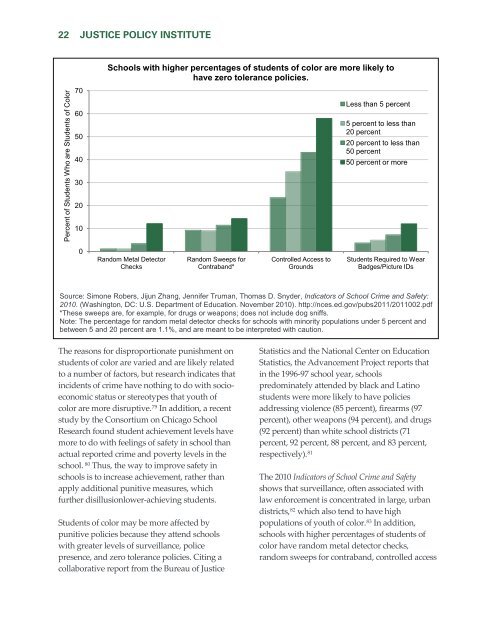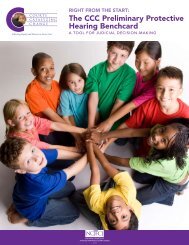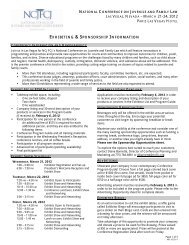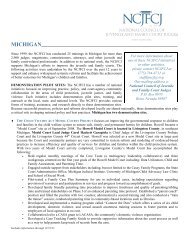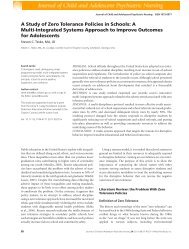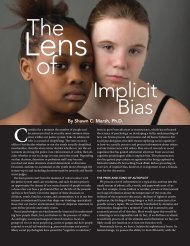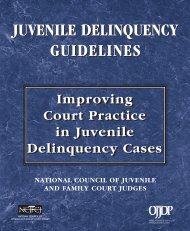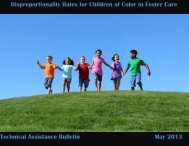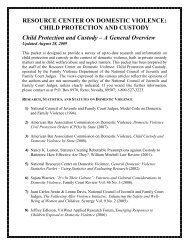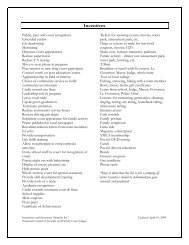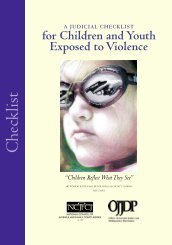EDUCATION UNDER ARREST: - Justice Policy Institute
EDUCATION UNDER ARREST: - Justice Policy Institute
EDUCATION UNDER ARREST: - Justice Policy Institute
- No tags were found...
Create successful ePaper yourself
Turn your PDF publications into a flip-book with our unique Google optimized e-Paper software.
22 JUSTICE POLICY INSTITUTEPercent of Students Who are Students of Color70605040302010Schools with higher percentages of students of color are more likely tohave zero tolerance policies.Less than 5 percent5 percent to less than20 percent20 percent to less than50 percent50 percent or more0Random Metal DetectorChecksRandom Sweeps forContraband*Controlled Access toGroundsStudents Required to WearBadges/Picture IDsSource: Simone Robers, Jijun Zhang, Jennifer Truman, Thomas D. Snyder, Indicators of School Crime and Safety:2010. (Washington, DC: U.S. Department of Education. November 2010). http://nces.ed.gov/pubs2011/2011002.pdf*These sweeps are, for example, for drugs or weapons; does not include dog sniffs.Note: The percentage for random metal detector checks for schools with minority populations under 5 percent andbetween 5 and 20 percent are 1.1%, and are meant to be interpreted with caution.The reasons for disproportionate punishment onstudents of color are varied and are likely relatedto a number of factors, but research indicates thatincidents of crime have nothing to do with socioeconomicstatus or stereotypes that youth ofcolor are more disruptive. 79 In addition, a recentstudy by the Consortium on Chicago SchoolResearch found student achievement levels havemore to do with feelings of safety in school thanactual reported crime and poverty levels in theschool. 80 Thus, the way to improve safety inschools is to increase achievement, rather thanapply additional punitive measures, whichfurther disillusionlower-achieving students.Students of color may be more affected bypunitive policies because they attend schoolswith greater levels of surveillance, policepresence, and zero tolerance policies. Citing acollaborative report from the Bureau of <strong>Justice</strong>Statistics and the National Center on EducationStatistics, the Advancement Project reports thatin the 1996-97 school year, schoolspredominately attended by black and Latinostudents were more likely to have policiesaddressing violence (85 percent), firearms (97percent), other weapons (94 percent), and drugs(92 percent) than white school districts (71percent, 92 percent, 88 percent, and 83 percent,respectively). 81The 2010 Indicators of School Crime and Safetyshows that surveillance, often associated withlaw enforcement is concentrated in large, urbandistricts, 82 which also tend to have highpopulations of youth of color. 83 In addition,schools with higher percentages of students ofcolor have random metal detector checks,random sweeps for contraband, controlled access


